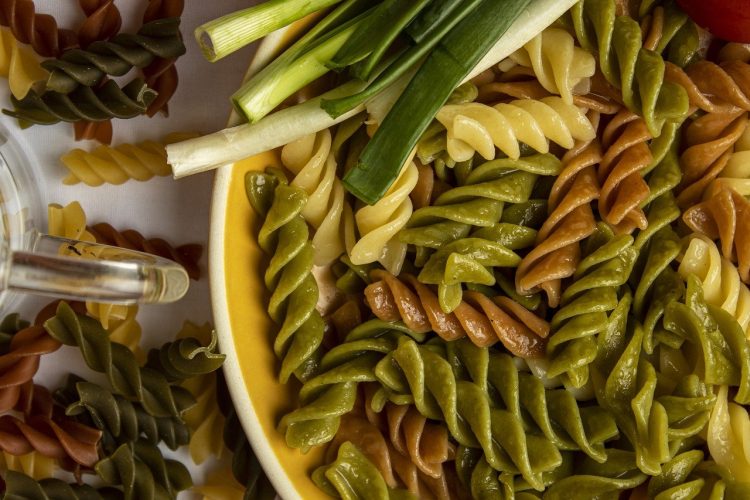In today’s fast-paced world, maintaining a healthy diet can often feel overwhelming. Juggling work, family, and personal obligations leaves little time for cooking, and many of us end up relying on takeout or fast food. However, learning how to master the art of meal prep can make a significant difference in how you approach your weekly meals, helping you stay on track nutritionally and save time and stress in the process. Meal prep isn’t just for fitness enthusiasts—it’s for anyone who wants to make healthy eating more accessible. In this guide, you’ll learn the basics, benefits, and practical tips for making meal prep a part of your life.
1. Understand Your Meal Prep Goals
The first step to mastering meal prep is understanding your goals. Are you trying to save time during busy workdays? Maybe you want to eat healthier or follow a specific diet like keto, vegan, or high-protein. Defining your goals will help guide the types of meals you prepare and how you organize your process. This step is vital because meal prepping looks different for everyone—someone aiming for weight loss might focus on portion control, while a busy parent might want family-friendly meals that can be prepared quickly.
2. Plan Your Meals for the Week
A successful meal prep session starts with a solid plan. Sit down once a week to plan your meals. It doesn’t need to be complicated; just make a simple list of breakfasts, lunches, dinners, and snacks you want for the upcoming week. You can use meal planning apps, spreadsheets, or even pen and paper—whatever works for you. Planning ahead helps you avoid impulse purchases at the grocery store and reduces food waste. A key point to remember is to build variety into your meal plan to avoid getting bored of eating the same thing every day.
3. Make a Shopping List and Stick to It
Once your meal plan is ready, create a shopping list. Be specific about the ingredients you’ll need for each meal. This helps you stay organized, avoid overbuying, and ensure you have everything required for meal prep. Shopping with a list also makes it less likely that you’ll end up with a cart full of unhealthy snacks and random items. Consider grouping your shopping list by categories like vegetables, dairy, grains, etc. to make navigating the grocery store easier.
4. Invest in Quality Storage Containers
The right storage containers can make or break your meal prep routine. Investing in high-quality containers with tight-fitting lids helps keep your food fresh longer and prevents spills. Choose containers in various sizes to accommodate everything from dressings to full meals. Glass containers are a great choice because they are microwave-safe and can withstand temperature changes. Additionally, make sure to label your containers with the contents and date to keep track of how long the food will last.
5. Batch Cooking vs. Portioning Meals
There are different methods of meal prepping, and you can choose the one that best fits your lifestyle. Batch cooking involves cooking large quantities of a single recipe, such as soup, chili, or stir-fry, and then storing it for the week. This method is ideal if you don’t mind eating the same meal multiple times. Alternatively, portioning individual meals involves preparing and packaging multiple meals—perfect for those who prefer variety. You can mix and match proteins, vegetables, and grains to create balanced meals, preventing boredom and allowing for greater flexibility throughout the week.
6. Focus on Versatile Ingredients
One of the secrets to successful meal prep is choosing ingredients that can be used in multiple meals. Ingredients like chicken breast, quinoa, roasted vegetables, and leafy greens are versatile enough to fit into a variety of dishes. For example, roasted chicken breast can be used in salads, wraps, pasta, or paired with veggies for dinner. This reduces the number of ingredients you need to buy, saving both time and money.
7. Set Aside Time for Meal Prep
Consistency is key when it comes to meal prepping. Set aside a specific time each week to focus on prepping your meals—many people prefer Sundays or evenings after grocery shopping. Treating meal prep as a non-negotiable appointment helps make it a habit. Depending on the number of meals you want to prepare, the entire process can take anywhere from one to three hours. With practice, you’ll become more efficient, and the benefits of having ready-to-eat meals will make it worth the time investment.
8. Prep Ingredients, Not Just Meals
If you don’t want to prep entire meals, focus on prepping ingredients instead. This method is known as ‘mise en place’ and involves washing, chopping, and portioning out ingredients ahead of time, so they’re ready to go when you need them. For example, chop vegetables for stir-fries, marinate proteins, or prepare overnight oats for breakfast. Prepping ingredients cuts down on the time it takes to cook during the week, making it easier to whip up healthy meals without much effort.
9. Freeze for the Future
Freezing meals is an excellent way to preserve food and reduce waste. You can make double batches of recipes like soups, stews, and casseroles and freeze them for future use. Make sure to label everything, including the date it was prepared. Freezing individual portions is also helpful for those nights when you don’t feel like cooking or if you need a quick lunch. Not everything freezes well, so do a little research before putting items in the freezer—for example, cooked pasta can turn mushy, while grains like rice freeze beautifully.
10. Keep Snacks On Hand
Meal prepping isn’t just for main meals; snacks are equally important. Pre-portioning snacks like mixed nuts, fresh fruit, or yogurt can help you make healthier choices when hunger strikes. Keeping snack portions in grab-and-go containers helps you avoid overeating and keeps you from reaching for less healthy alternatives. Energy bites made with oats, nut butter, and honey are a great option that can be prepared in advance and stored in the fridge.
11. Use Flavor Enhancers
Meal prepping doesn’t have to be boring or bland. Use flavor enhancers like spices, herbs, sauces, and marinades to make each meal delicious. Consider making a few different dressings or sauces at the beginning of the week, such as a lemon vinaigrette, tahini dressing, or a spicy peanut sauce. This allows you to add variety to even the simplest meals. Fresh herbs like cilantro, parsley, and basil can also be prepped and stored in water to stay fresh longer.
12. Make It Family-Friendly
If you’re cooking for a family, involve everyone in the meal prep process. This not only makes the workload lighter but also helps teach children about healthy eating habits. Let your kids choose one or two meals they’d like to eat that week and assist with tasks like washing vegetables or measuring ingredients. Prepping family-sized portions of meals like pasta bake, casserole, or tacos is a great way to satisfy everyone’s taste preferences while saving time.
13. Don’t Forget About Breakfast
Breakfast is an essential meal that can set the tone for your entire day. Prepare simple breakfasts like overnight oats, smoothie packs, or egg muffins in advance to make mornings less stressful. Overnight oats are especially easy—just combine oats, milk (or a dairy-free alternative), and toppings like fruit or nuts in a jar and let it sit in the fridge overnight. Breakfast burritos are also a great make-ahead option that can be wrapped in foil and frozen for a quick grab-and-go breakfast.
14. Clean As You Go
Meal prep can get messy, especially if you’re cooking multiple recipes at once. To keep the process more enjoyable, make an effort to clean as you go. Washing dishes or loading the dishwasher while something is cooking on the stove helps reduce the pile-up at the end of your session. Keeping your workstation clean also helps you stay organized and makes the process more efficient.
15. Rotate Your Recipes
Eating the same meals every week can get monotonous, which is why rotating your recipes is so important. Incorporate a new recipe into your meal prep every week or two to keep things exciting. Exploring different cuisines and using seasonal produce can introduce new flavors and keep you from getting bored. Experimenting with new meals also allows you to continue developing your cooking skills.
16. Store Foods Properly
How you store your meals affects how long they stay fresh. Store cooked meals in airtight containers, and be mindful of the order you eat them in—consume the more perishable items earlier in the week. If you prep fresh greens for salads, consider storing them with a paper towel to absorb excess moisture, which helps prevent wilting. Pay attention to the temperature of your refrigerator to ensure everything is being kept at a safe temperature.
17. Keep a Meal Prep Journal
If you’re serious about meal prep, keeping a meal prep journal can be beneficial. Use it to track what meals worked well, what didn’t, and any adjustments you made or want to make next time. This will help streamline future meal prep sessions, reduce food waste, and ensure you’re consistently eating a balanced diet.
18. Stay Flexible
Life is unpredictable, and plans change. Stay flexible with your meal prep routine—if you don’t feel like eating a particular meal, swap it out or freeze it for another time. The goal of meal prep is to make your life easier, not more rigid. Keeping a few extra items like frozen veggies or canned beans on hand can help you adjust if you need a last-minute change.
19. Learn from Your Mistakes
Not every meal prep session will go perfectly, especially in the beginning. You might find that you made too much of a certain recipe or that a particular dish didn’t keep well. Instead of getting discouraged, treat it as a learning experience. Take note of what went wrong, adjust your approach, and try again next week. The more you meal prep, the better you’ll become at understanding what works for you and your lifestyle.
20. Celebrate Your Success
Finally, remember to celebrate your successes. Meal prepping is a commitment, and every time you complete a successful session, you’re investing in your health and well-being. Recognize your efforts, whether it’s enjoying a quiet lunch you prepared or taking pride in a well-stocked fridge. Acknowledge that every small step is a step towards healthier eating and a more organized lifestyle.
Meal prepping can seem intimidating at first, but with practice and patience, it will soon become a valuable part of your weekly routine. Whether your goal is saving time, eating healthier, or reducing stress, meal prepping provides you with the tools to achieve a more balanced, mindful approach to food. With these tips, you’ll be well on your way to mastering the art of meal prep and transforming the way you think about cooking and eating.










